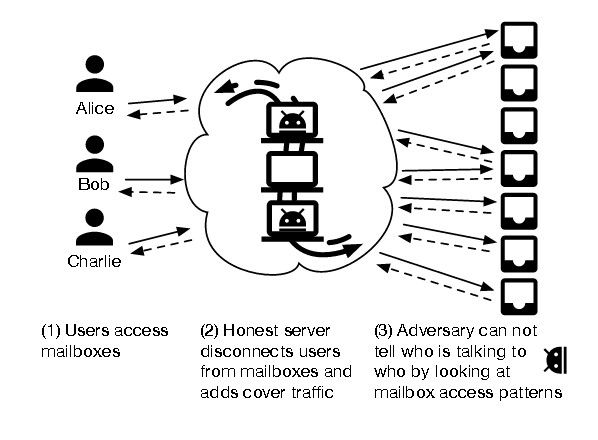MIT has developed a secure messaging network Vuvuzela

At the Massachusetts Institute of Technology's Computer Science and Artificial Intelligence Laboratory (CSAIL MIT), security experts have created a messaging system that protects against wiretapping. In contrast to the usual approach with increased encryption, they offer a network in which useful messages are hidden behind an avalanche of "junk" traffic.
Network messages experts called " Vuvuzela ." Even those who do not like sports, plastic horns with a terrible “voice”, have become known after the 2010 World Cup. Inspired by the noise produced by these devices, the developers decided to name their network in the same way.
')
In fact, messages originating from senders are transmitted to the network and stored on randomly selected servers that make it up, which the developers simply called "mailboxes." Before being stored in one of the boxes, the message passes through several servers that send spurious traffic to all neighboring servers, making it difficult to track the network and move messages.
The recipient's computer receives a notification about the presence of a message for him in one of the "mailboxes", and is sent to receive it, while also connecting with multiple servers on the network, in order to "confuse traces".

The huge amount of side traffic, as conceived by developers, should provide a potential attacker with a lot of problems with tracking the activity of network users. With a sufficiently large number of users it should be difficult to determine which of the users communicate with whom.
According to the calculations of the developers, the network will be able to remain secure for communication, even if the attackers take control of more than half of the servers in the system.
On tests conducted using Amazon cloud servers, a network was created with a million users. In such a network, messaging occurred at a rate of about 15,000 per second, with an average message delivery delay of 44 seconds. This is less like a chat, and more like deferred messages like email. But since this was just the first test of the system under development, we can most likely expect an improvement in these results.
Source: https://habr.com/ru/post/367313/
All Articles